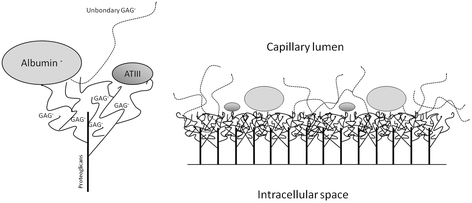Glycocalyx and sepsis-induced alterations in vascular permeability
- PMID: 25887223
- PMCID: PMC4308932
- DOI: 10.1186/s13054-015-0741-z
Glycocalyx and sepsis-induced alterations in vascular permeability
Abstract
Endothelial cells line the inner portion of the heart, blood vessels, and lymphatic vessels; a basal membrane of extracellular matrix lines the extraluminal side of endothelial cells. The apical side of endothelial cells is the site for the glycocalyx, which is a complex network of macromolecules, including cell-bound proteoglycans and sialoproteins. Sepsis-associated alterations of this structure may compromise endothelial permeability with associated interstitial fluid shift and generalized edema. Indeed, in sepsis, the glycocalyx acts as a target for inflammatory mediators and leukocytes, and its ubiquitous nature explains the damage of tissues that occurs distant from the original site of infection. Inflammatory-mediated injury to glycocalyx can be responsible for a number of specific clinical effects of sepsis, including acute kidney injury, respiratory failure, and hepatic dysfunction. Moreover, some markers of glycocalyx degradation, such as circulating levels of syndecan or selectins, may be used as markers of endothelial dysfunction and sepsis severity. Although a great deal of experimental evidence shows that alteration of glycocalyx is widely involved in endothelial damage caused by sepsis, therapeutic strategies aiming at preserving its integrity did not significantly improve the outcome of these patients.
Figures



References
-
- Dellinger RP, Levy MM, Carlet JM, Bion J, Parker MM, Jaeschke R, Reinhart K, Angus DC, Brun-Buisson C, Beale R, Calandra T, Dhainaut JF, Gerlach H, Harvey M, Marini JJ, Marshall J, Ranieri M, Ramsay G, Sevransky J, Thompson BT, Townsend S, Vender JS, Zimmerman JL, Vincent JL. Surviving Sepsis Campaign: international guidelines for management of severe sepsis and septic shock: 2008. Intensive Care Med. 2008;34:17–60. doi: 10.1007/s00134-007-0934-2. - DOI - PMC - PubMed
MeSH terms
Substances
LinkOut - more resources
Full Text Sources
Other Literature Sources
Medical

